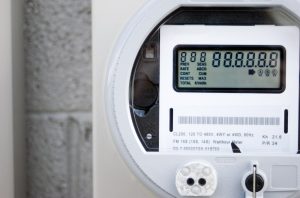Home > Energy Plans > Moving House Checklist
Moving House Checklist
Here’s your ultimate moving house checklist to help you stay organised throughout your moving journey
Author
Savvy Editorial TeamFact checked

Here’s your ultimate moving house checklist to ensure your relocation is as stress-free as possible! Moving to a new home can be an exciting yet highly stressful experience. To ensure everything goes smoothly, a well-organised checklist is crucial to keep your planning efforts on track. Our comprehensive moving house checklist covers everything you need to consider before, during, and after the move. From hiring removalists and packing to taking care of pets, we've got you covered with our ultimate moving house checklist.
How soon before moving should I start to get organised?
Start getting organised for your move at least six weeks before the moving date. This may seem like a long time to start preparing to move, but once you start thinking of all the things you’ll need to take care of, time will rush by and it’ll be moving day before you know it! So, start early if you want to avoid the last-minute panic!
Six weeks before moving date
- Get quotations from moving companies, then book a removalist
- Make sure you are protected by arranging moving and transit insurance
- Make sure you have home insurance for your new home (if you have purchased a house)
- Create a floor plan of your new home to help with furniture placement. The plans drawn up by real estate agents on selling brochures can be scanned and enlarged to be used for this purpose
- On your plan, give each room in your new house a number which corresponds to the existing rooms in your current house
- Using your floor plan, decide where major pieces of furniture are going to be placed
- Make a list of precious and fragile items that will need special care on moving day
- Make a folder to store all your moving documents safely
Five weeks before moving date
- Start to dispose of items that are no longer required in the garden and garage
- Hold a garage sale to get rid of small unwanted items and things that won’t be coming with you
- Advertise large unwanted items for sale using social media platforms or online sales sites
- Create a ‘donation’ pile, and each week donate unwanted items to family, friends, neighbours or charity shops
- Visit your vet to discuss pet care and transport for the move. Decide how your pets will be taken care of on your moving day
- Apply for leave from work, and inform your children’s schools of your moving date
- If you work from home, start to inform clients about your relocation plans
- Plan to use up and eat bulk food items and open packets in the kitchen so you don’t end up transporting food items of little value
Four weeks before moving date
- Arrange to collect packing materials and cardboard boxes from the removalist, if you are packing yourself
- If you don’t already have them, buy packing tape, marking pens, and sticky notes or labels that you can use to number furniture
- Start packing things that you won’t use in the next month, such as craft or hobby items and shed and gardening equipment
- Label all cartons with the content and room destination number
- Get down any stored items from the attic, or other long-term storage places, and decide if they are coming with you. If not, sell them or donate them
- If you have older children, hold a family meeting to create a furniture location plan for each room in your new house
- Inform neighbours and friends that you are moving so you have time to arrange farewell gatherings
- Think about a survival kit for moving day, and what you should have in your survival kit
Three weeks before moving date
- Inform your utility providers that you are moving, and arrange new energy plans for gas and electricity at your new home
- Use Savvy’s free comparison service to find out if your current retailer offers energy plans in your new location, and to find out how to get your electricity connected in your new home
- Double check with your removalists and/or packers that all plans are in place, and confirm the date. Make sure you get a quotation in writing from your removalists
- Contact Australia Post and get your mail redirected as from your moving date
- Think about arrangements for moving day itself, and if necessary, make arrangements for your pets and young children to be looked after while you are moving
- Defrost and clean your freezer and fridge, plus clean any empty cupboards or sheds or outdoor furniture
- Clean any air conditioning or extractor fan filters or ducts in your current home, to leave them clean for the next occupants
- Continue to use up food in your cupboards, and throw out any bottles or packets of food that are past their use-by date
- Begin to pack items that you won’t need in the next fortnight, such as Christmas decorations, spare linen and infrequently-used crockery and cutlery
- Think about how you will relocate towable possessions such as caravans, trailers, jet-skis and motorbikes. Make any necessary arrangements for family and friends to help you store or relocate these items prior to moving day
Two weeks before moving date
- Finish off selling all unwanted items or donate them to charity
- Empty and clean any compost bins, water fountains or large pots or garden items that you intend to take with you
- Decide if you want to take any plants or cuttings from your garden, and if so, transplant them into moveable pots or containers
- Hold your final farewell get-togethers, and inform your sports clubs and regular service providers that you are moving
- Get each family member to start packing their non-essential items, making sure every box is labelled with the destination room number in your new home
- Each day, continue to pack more items that won’t be needed in the following week, such as non-essential laundry and kitchen items, spare out-of-season clothing and spare bedding
- Start getting your pets familiar with their travelling cages or crates so they are not so stressed on moving day
- Stock up on any medications you may need from your local chemist, as it may be a while before you find a new supplier for your regular medications
- Remember to return any items you’ve borrowed from nearby friends, neighbours or the local library
- Finalise your arrangements to get your pets or young children cared for on your moving day
One week before moving date
- By now, many non-essential items should be packed up and labelled. As moving day gets closer, begin to pack up the everyday items and clothes that you can do without for a few days
- Eat up any remaining pantry or fridge items so you don’t have to throw out or waste food on the day you move
- Start to pack your essential survival kit, and make a list of the items that should be added to the kit on moving day. Place this list in the box or bag you’ve chosen so it doesn’t get lost
- Three days before moving day, water your houseplants to give them time to drain and get dry before you move them
- Backup your computer hard disk data and store important photographs or documents on memory sticks or portable hard drives. Put these in your survival kit for easy retrieval in case your computer, laptop or tablet gets damaged in the move
- Make sure you have a backup note or list of all your recovery passwords and details, your wi-fi network details and essential numbers needed to get you back online quickly at your new home
- Go around your house and label all major pieces of furniture with their destination room in your new home. Make sure these labels correspond to your furniture moving layout plan which you will supply to your removalists.
- Laminate your new house furniture plan or put it in a plastic cover so it can be displayed at the entrance to your home as the removalists carry furniture into your new home
- Make sure you have plenty of copies of your moving furniture plan – you may need one for the entrance to your new house, and another copy inside your house for quick reference
- The day before you move, confirm your new address, contact numbers, packing and unpacking requirements, payment options, parking details and other last-minute essential information with your removalists
On moving day
- Set your alarm early so you are not surprised if your removalists turn up before the agreed time
- Strip all beds and begin to dismantle the beds in preparation for them being loaded into the removal van. Number or label screws, bolts and other fixings so you can easily reassemble them later
- Unplug and then drain liquids from your washing machine, dishwasher, fridge, freezer, ice makers, etc. Empty and coil up any water hoses or storage containers so they don’t leak water when moved
- Pack up all your remaining clothes and toiletries, and place all essential items into your survival kit. Don’t forget to pack tea or coffee, milk, a kettle, mugs and food snacks to keep you fuelled up on your big day
- Ensure your high-priority boxes can be accessed easily, so make sure they are packed last so they are first out of the removal van
- Carry urgent and essential items including your survival kit in the car with you as you drive to your new home
- Remember to arrange for your rubbish bins to be put out for council pickup on the appropriate day
- Don't forget to leave garage remote controls and other essential remote controls for the new tenants or homeowners
- Take photos of your utility meter readings (gas, electricity and water) as you leave so you can check that your final meter readings are correct
- Make sure your old house is secure when you leave it, and that all keys or security codes are left where the new residents can easily find them. Turn off the water heater and lock all doors and windows.
- If appropriate, leave a welcome note for the new residents, plus essential household appliance instruction manuals, diagrams or warranty information
- When you get to your new home, check where the removal van can park, and make sure there is clear access to the front door for the removalists
When you arrive at your new home
- When you arrive at your new home, first give a detailed tour to the removalists and talk them through your furniture plan so they can quickly move items into the correct rooms
- Check if all utilities are connected. If they are not, contact your energy retailers and arrange an urgent electricity connection
- Plug in and turn on essential appliances like air conditioners, ovens, dishwashers and hot water heaters
- Double-check if there are any items left behind by the previous tenants or occupants
- Go around your new house and check for any damage, or appliances left dirty or unusable. Take photographs so you have proof if necessary.
- Leave your fridge and freezer in the upright position for a few hours before switching them on
- Unpack your moving day survival kit so you can eat, drink and have access to essential items immediately
- Place your important documents in a safe place with your phone chargers so they don’t get lost
- Wait for the removalists to finish unloading the van before you start to unpack non-urgent boxes
- First unpack the most essential items that you’ll need the next day, such as basic food, toiletries and a change of clothes
- Start with assembling your beds, to make sure you all have somewhere to sleep that first night
- Make baby and toddler beds a priority, and unpack familiar items and toys to make their new room personal and comforting
- Reassemble and make up adult beds next, then plan a sumptuous meal to celebrate that night if possible (even if it’s a takeaway!)
- Arrange essential toiletries, medications, phone chargers and toothbrushes ready for the next day
- Settle pets in with food, water, treats and toys in their usual bedding, and show them their new toileting arrangements
After you’ve moved in:
- Relax and celebrate your successful move! Don’t try and do too much the first day. Take the time to get to know your new home and garden
- Don’t be surprised if you find yourself exhausted or unable to unpack boxes immediately. You may need some recovery time after the stressful move!
- Notify the removalist company immediately if you find anything missing or damaged
- Unpack and arrange your kitchen first, starting with one box at a time to avoid getting distracted
- Decide where you are going to store empty boxes and packing materials, preferably out of the way to avoid clutter
- Encourage older children to help unpack and organise their own rooms
- Plug in your modem and make sure your internet connection works if you plan to work from home
- Make a note of all emergency contact numbers for essential services in your new area
- Once you’ve had time to settle in, contact your doctor, dentist, other specialists and medical professionals and make arrangements to have your medical records forwarded to new providers if necessary
Helpful energy guides
Compare energy plans
Disclaimer:
Savvy is partnered with Econnex Comparison (CIMET Sales Pty Ltd, ABN 72 620 395 726) to provide readers with a variety of energy plans to compare. We do not compare all retailers in the market, or all plans offered by all retailers. Savvy earns a commission from Econnex each time a customer buys an energy plan via our website. We don’t arrange for products to be purchased directly, as all purchases are conducted via Econnex.
Any advice presented above is general in nature and doesn’t consider your personal or business objectives, needs or finances. It’s always important to consider whether advice is suitable for you before purchasing an energy plan. For further information on the variety of energy plans compared by Econnex, or how their business works, you can visit their website.









